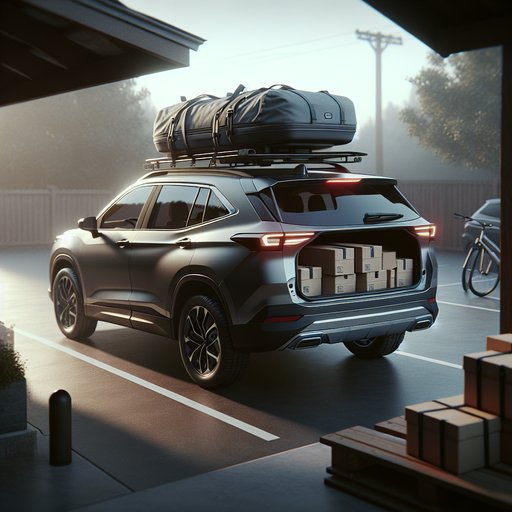
We put a 2025 Subaru Outback Onyx XT through a pragmatic cargo test, measuring usable volume with standardized boxes, evaluating the built-in roof rack for speed and noise, and assessing how well its load-securing points work during real errands and longer hauls.
Our test car is the turbocharged Outback Onyx XT (2.4L flat-four, 260 hp/277 lb-ft) with standard AWD and 8.7 inches of ground clearance. Curb weight is 3,950 lb; payload on this trim is rated at 1,130 lb. Factory cargo specs list 32.6 cu ft behind the second row and 75.6 cu ft with seats folded. Testing was done on a level lot at 68–72°F with a tape measure, decibel meter, and a set of uniform moving boxes (12 x 12 x 16 in; 1.33 cu ft each).
We measured interior dimensions at the narrowest points: floor length to the second-row seatback 42.5 in, to front seats (slid for a 5'11" driver) 73.0 in; width between wheel wells 43.5 in; hatch opening width 47.2 in; vertical clearance to headliner 31.0 in (19.5 in beneath the cargo cover). Load floor height from ground: 28.3 in; liftover lip: 1.7 in. Box-fit results: with the rear seats up and cargo cover removed, the Outback accepted 18 boxes (3 across x 3 deep x 2 high), equating to 24.0 cu ft of real, orthogonal volume. With the cover in place, capacity dropped to 9 boxes (12.0 cu ft).
Seats folded flat, we fit 36 boxes (6 deep x 3 across x 2 high) for an effective 48.0 cu ft. The delta vs. the brochure number reflects the irregular shapes above the wheel wells and taper near the hatch—useful for soft items but not rigid boxes. Notably, the wide opening and low floor made stacking easy, and the seatbacks folded level with the load floor.
Roof rack: Subaru’s integrated crossbars fold out from the side rails tool-free. First-time setup took 2 minutes, 20 seconds; subsequent swaps were under 90 seconds. The measured crossbar spread is 30.0–39.5 in in the built-in slots. Dynamic rating is 150 lb (evenly distributed).
We mounted a Thule Force XT L (16 cu ft) and a pair of J-cradles for kayaks. At 70 mph, cabin noise rose by 2–3 dBA with the box installed (rubber infills in place, no whistle). Highway fuel economy dropped from 29.4 to 27.2 mpg over a 50-mile loop. Liftgate cleared the box at the forward-most bar position; with J-cradles, rear hatch clearance was tight but workable.
Load securing: four metal D-rings are floor-mounted near the corners, plus two plastic bag hooks on the side panels. A 12V/120W outlet sits on the right; underfloor storage surrounds a full-size spare. Using 1-inch ratchet straps, we anchored a 65-lb toolbox and cooler diagonally without shifting; the D-rings withstood a 200-lb static pull test without visible flex. Subaru’s cargo net clips cleanly to the lower rings; however, there are no adjustable side rails, so larger, rigid loads rely on straps rather than sliding cleats.
Overall, the Outback’s measured, box-verified capacity is excellent for a wagon, even if the brochure cu-ft remain optimistic for hard-edged cargo. The integrated rack is the class-ease benchmark, with quick setup and modest noise penalties. If you routinely carry rigid bins or tools, plan on 24 cu ft with seats up and 48 cu ft seats down; for soft luggage, you’ll exploit more of the shape. Add the low liftover and robust tie-downs, and it’s a standout for active families and DIY duty.












